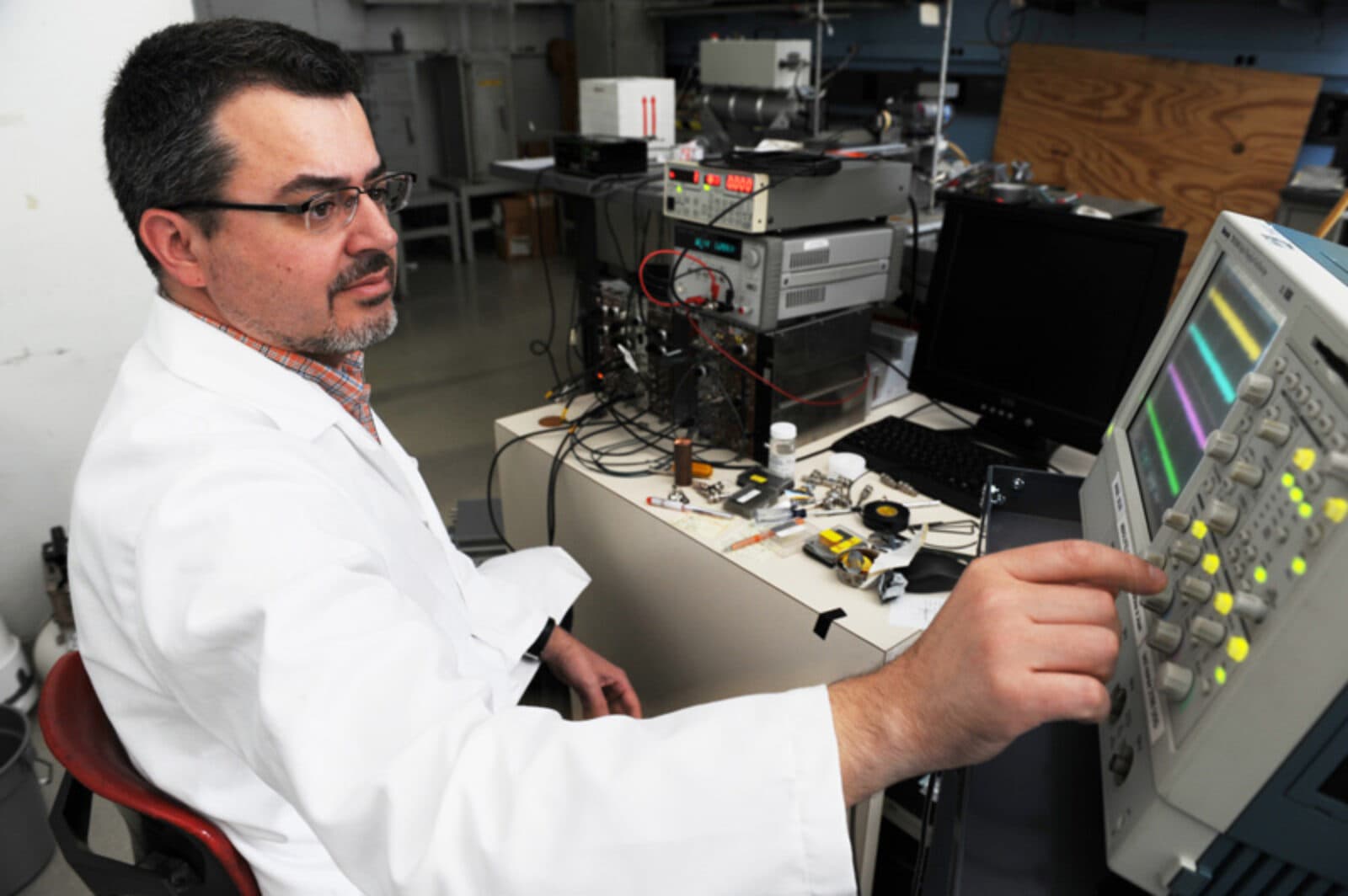Dark-Matter Search Plunges Physicists to New Depths

(Originally published by the University of Chicago)
August 11, 2010
This month, physicist Juan Collar and his associates are taking their attempt to unmask the secret identity of dark matter into a Canadian mine more than a mile underground.
The team is deploying a 4-kilogram bubble chamber at SNOLab, which is part of the Sudbury Neutrino Observatory in Ontario, Canada. A second 60-kilogram chamber will follow later this year. Scientists anticipate that dark matter particles will leave bubbles in their tracks when passing through the liquid in one of these chambers.

Dark matter accounts for nearly 90 percent of all matter in the universe. Although invisible to telescopes, scientists can observe the gravitational influence that dark matter exerts over galaxies. “There is a lot more mass than literally meets the eye,” said Collar, a senior member of the University of Chicago’s Kavli Institute for Cosmological Physics. “When you look at the matter budget of the universe, we have a big void there that we can’t explain.”
Likely suspects for what constitutes dark matter include Weakly Interacting Massive Particles (WIMPS) and axions. Theorists originally proposed the existence of both these groups of subatomic particles to address issues unrelated to dark matter. “These seem to be perfect to explain all of these observations that give us this evidence for dark matter, and that makes them very appealing,” Collar said.
SNOLab will be the most ambitious in a series of underground locations where Collar and his colleagues have searched for dark matter. In 2004, they established the Chicagoland Observatory for Underground Particle Physics (COUPP) at Fermi National Accelerator Laboratory.
“We started with a detector the size of a test tube and now have increased the mass by a factor of more than a thousand,” said Fermilab physicist Andrew Sonnenschein. “It’s exciting to see the first bubble chamber being sent off to SNOLab, because the low level of interference we can expect from the cosmic rays there will make our search for dark matter enormously more sensitive.”

The COUPP collaboration consists of scientists from UChicago, Fermilab and Indiana University at South Bend. In 2008 the collaboration released its first results that established an old technology of particle physics—the bubble chamber—as a potential dark-matter detector.
COUPP extends to the city of Chicago’s flood-control infrastructure, called the Tunnel and Reservoir Project. The city has granted COUPP scientists access to the tunnels, 330 feet underground, to test prototypes of their instruments. The collaboration also tested instruments in a chamber 350 feet below Fermilab, and in a sub-basement of the Laboratory for Astrophysics and Space Research on the UChicago campus.
Collar continually seeks underground venues for his research in order to screen out false signals from various natural radiation sources, including cosmic rays from deep space. “It’s an interesting lifestyle,” Collar said.
The troublesome underground radiation sources consist of charged particles that lose energy as they traverse through a mile or more of rock. But rock has no impact on particles that interact weakly with matter, such as WIMPS, thus the move to Sudbury.
“SNOLab is a very special, spectacular place, because the infrastructure that the Canadians have developed down there is nothing short of amazing,” Collar said. Even though SNOLab sits atop a working nickel mine, conditions there are pristinely antiseptic.
“As you walk in, you have to shower to remove any trace of dust,” he said. “It’s a clean-room atmosphere, meaning that there’s essentially no specks of dust anywhere. We have to worry about such things, sources of radiation associated with dust.”

Collar also is a member of the Coherent Germanium Neutrino Technology (CoGeNT) collaboration, which operates a detector that sits nearly half a mile deep at the Soudan Underground Mine State Park in northern Minnesota. The 60-kilogram detector that Collar and colleagues will install at SNOLab later this year, meanwhile, undergoes testing in a tunnel 350 feet beneath Fermilab.
Linking the two sites is an invisible beam of neutrinos that stretches 450 miles from Fermi to Soudan. The beam is part of the Main Injector Neutrino Oscillation Search (MINOS), a particle-physics experiment that is unrelated to the search for dark matter.
The two detectors rely on entirely different techniques. CoGeNT uses a new type of germanium detector that targets the detection of light WIMPS.
“Most of us have been concentrating on intermediate-mass WIMPS for decades,” Collar said. “In the last few years the theoreticians have been telling us more and more, look, under these other sets of assumptions, it could be a lighter WIMP. This device is actually the first of its kind in the sense that it’s targeted specifically for light WIMPS. We’re seeing interesting things with it that we don’t fully understand yet.”
Collar estimates that it’ll take a decade or more for physicists to become completely convinced that they’ve seen dark-matter particles.
“It’s going to take a lot of information from very many different points of view and entirely independent techniques,” he said. “One day we’ll figure it out.